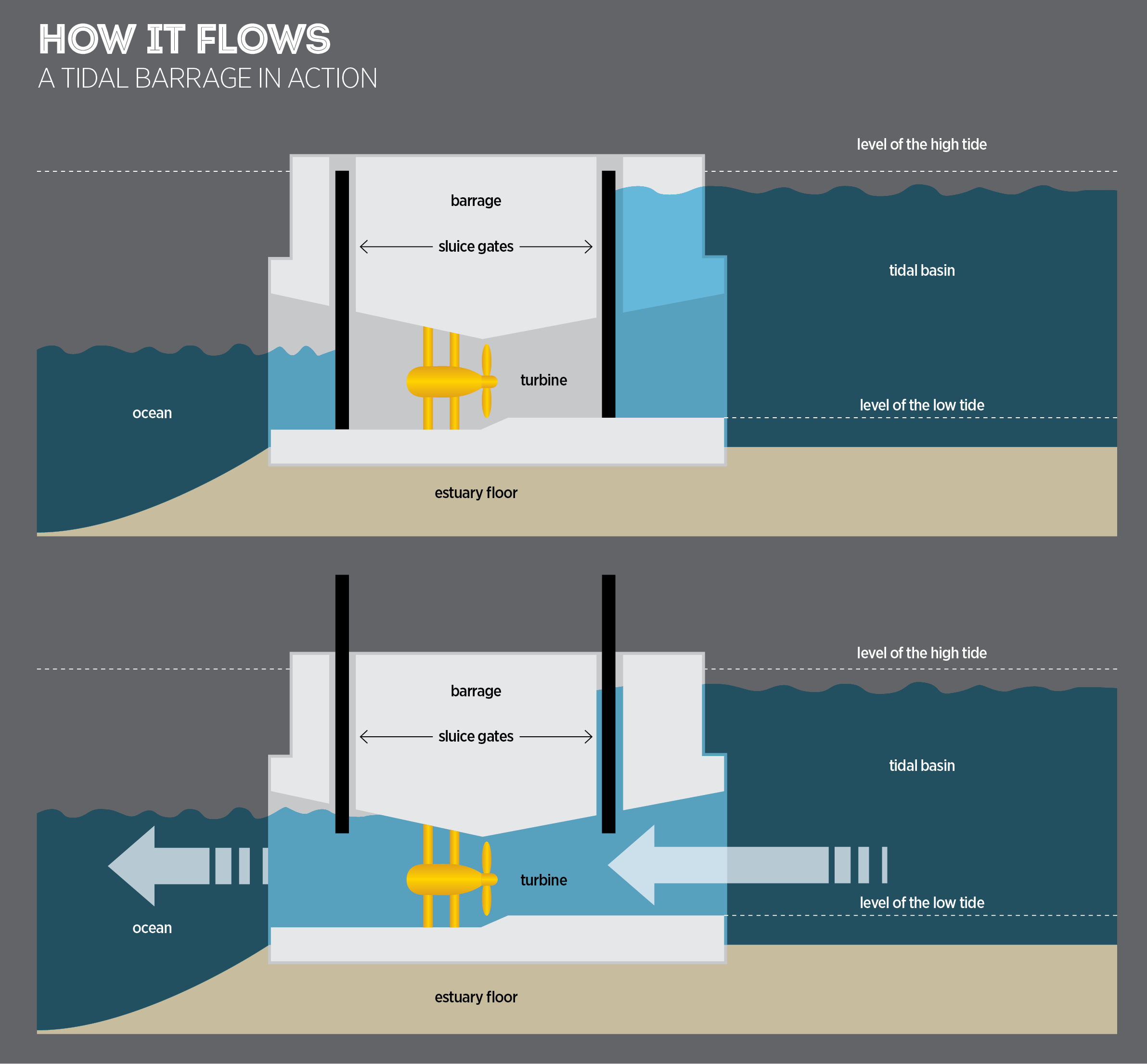

Other prospective sites are largely in the far north.

It could be connected to the national grid or off-grid to Flinders Island, which is currently reliant on a diesel-fuelled generator.


Dr Penesis says it could have a capacity of 350MW, generating about three terawatt hours of electricity a year – nearly a third of what Tasmania uses annually. One of the high-potential sites that will be studied is Banks Strait, which stretches between Tasmania’s north-eastern tip and the Furneaux island group.
TIDAL TURBINE GENERATOR GENERATOR
Project chief investigator Irene Penesis, an associate professor at the maritime college, says Australia’s potential installed tidal energy capacity could easily exceed 1.5GW – roughly the scale of Hazelwood, the giant Victorian brown coal generator that was retired in March.
TIDAL TURBINE GENERATOR TRIAL
Projects are under way in Canada’s Bay of Fundy and at testing sites in Ireland and France, and the maritime college recently completed a trial in Launceston’s Tamar River for Australian manufacturer MAKO Tidal Turbines. The turbine is connected to a gearbox that turns a generator, creating electricity. In simple terms, a tidal energy works via a turbine works like a wind turbine, with blades rotating 12-to-18 times a minute depending on tide strength. And there will be an assessment of the cost of connecting high-potential tidal energy sites to either the national grid or off-grid sites. There will also be a detailed feasibility study of two sites with potential for a commercial-scale tidal plant. The results will be published in an online atlas similar in style to a CSIRO wave energy map completed earlier this year. The three-year plan involves developing a national hydrodynamic tidal model that can map the tidal energy resource to 500m and identifying the most promising regions for energy extraction. This gap should be filled through a new $5.85 million project, led by researchers at the University of Tasmania’s Australian Maritime College in partnership with ARENA, the CSIRO and the University of Queensland. Until now he answer has basically been: we don’t really know.Īustralia’s tidal resource has only been modelled to a resolution of 10km – not fine grained enough to be meaningful given the impact of local geography. Usually, they ask authorities for information about the potential for development around the continent. Though invisible in most discussions of the future of electricity – tidal energy didn’t rate a mention in chief scientist Alan Finkel’s recent review of the future of the National Electricity Market – there has been interest from some investors in the possibility of tidal energy. At a time when a rising proportion of electricity generation comes from inconstant sources, and the need for reliability has become a mantra in public debate, the tides along Australia’s vast coast are potentially a significant untapped resource. Estimates suggest, at the best locations, tidal energy could power a turbine for between 18 and 22 hours a day, every day.


 0 kommentar(er)
0 kommentar(er)
